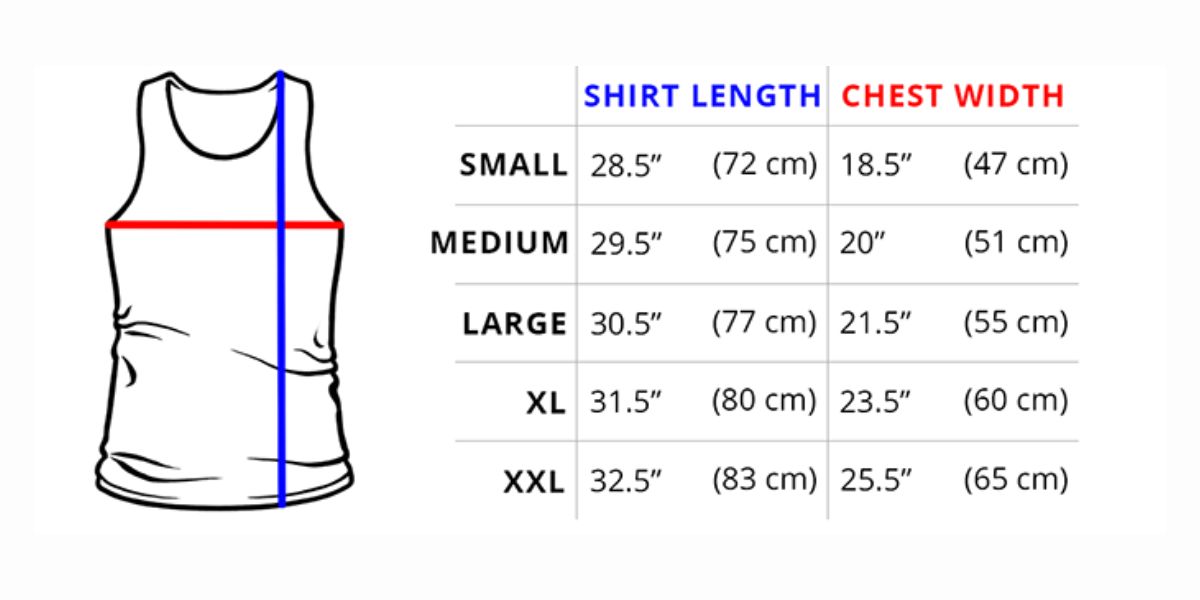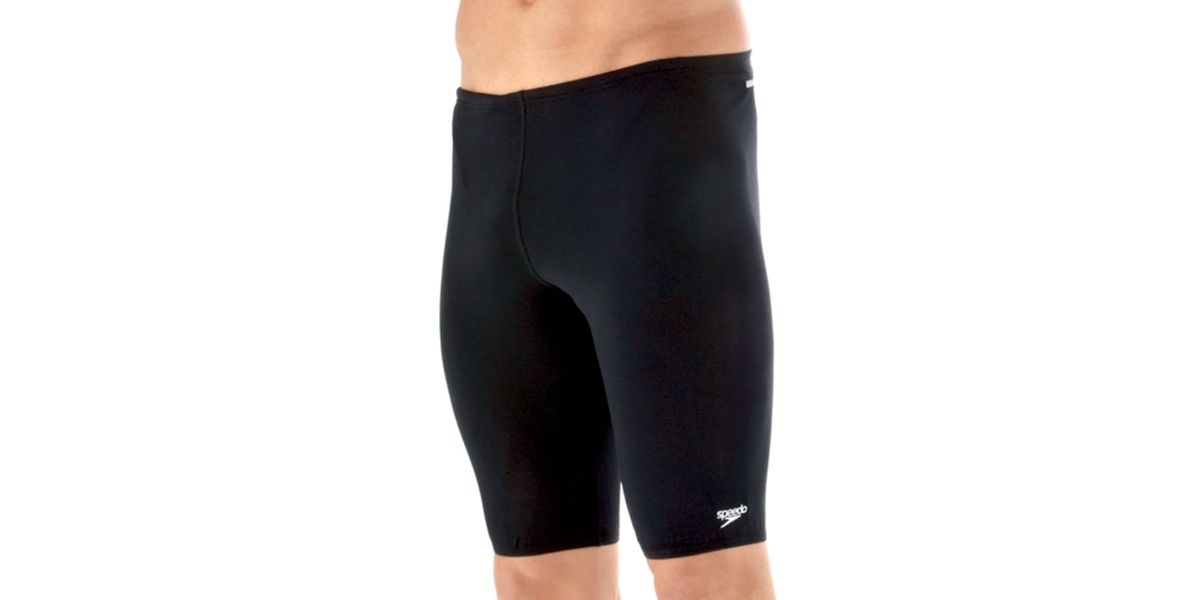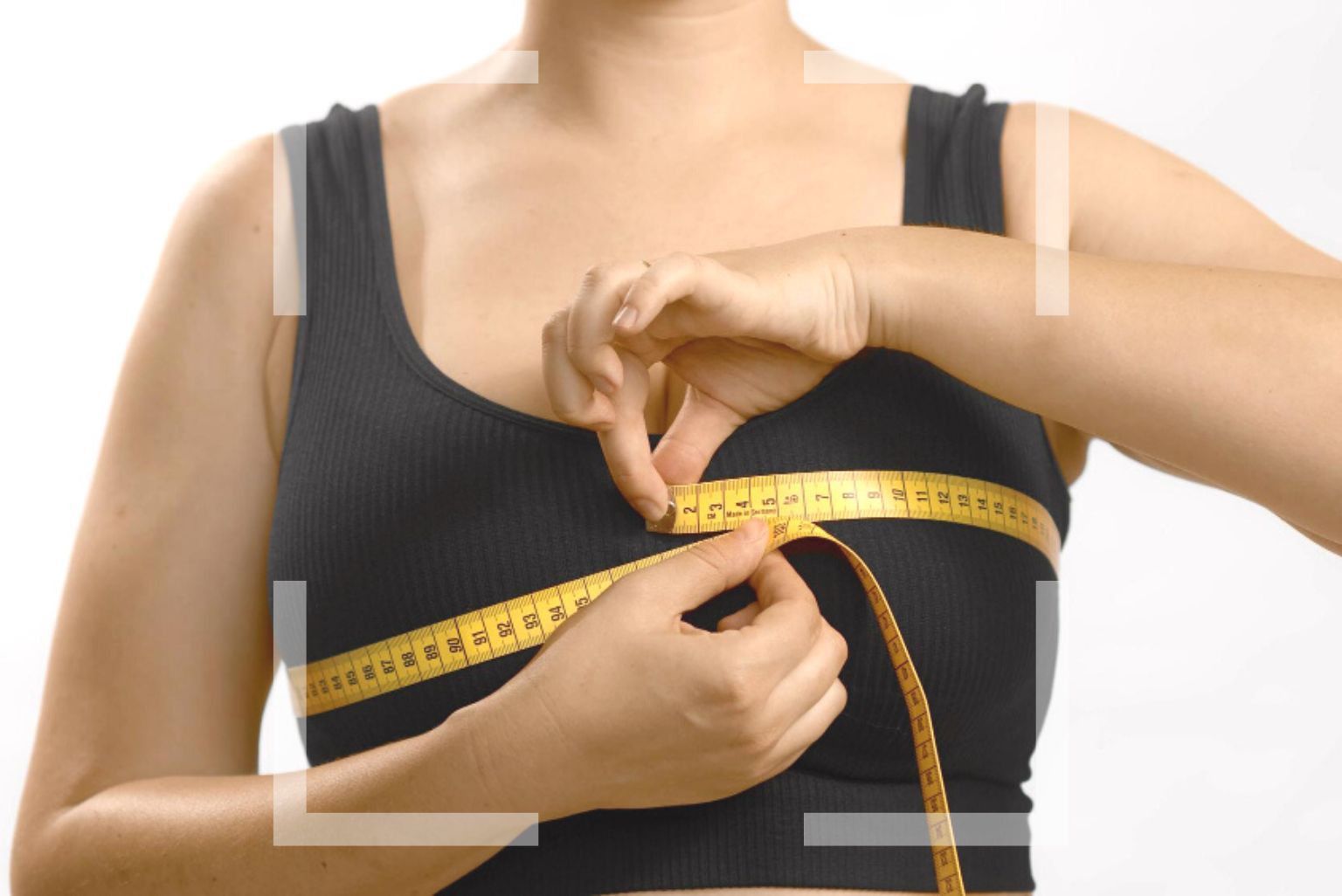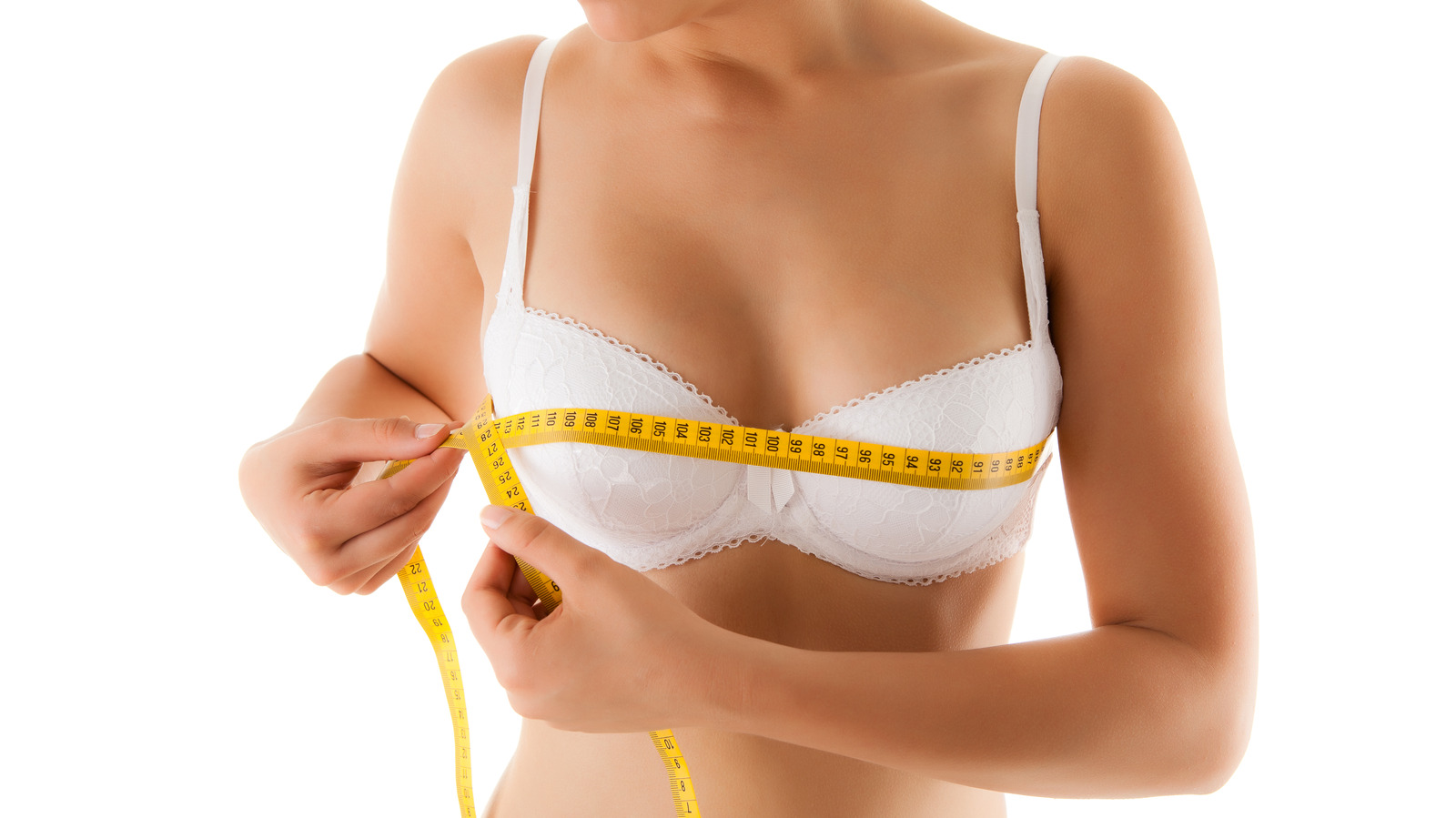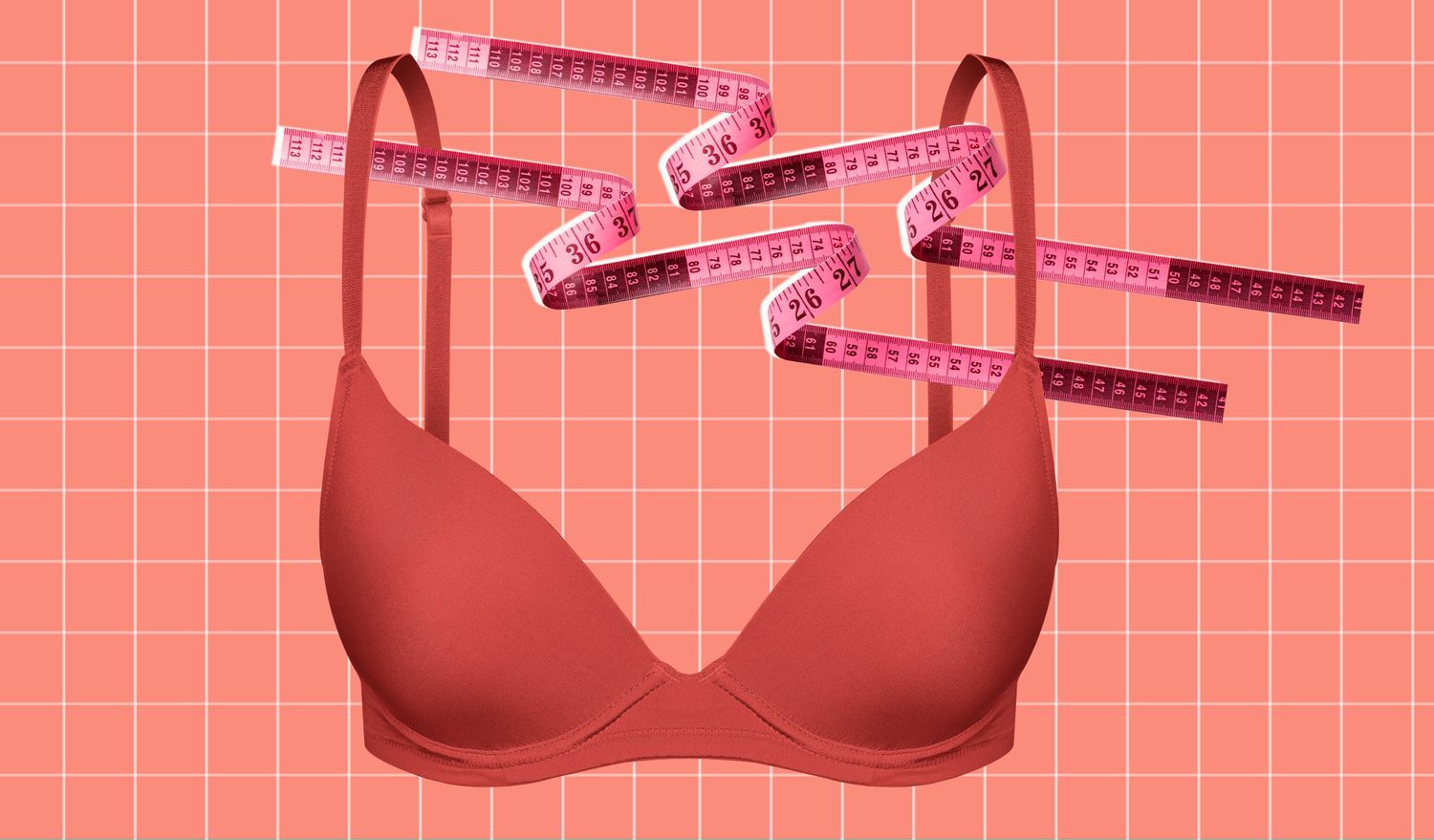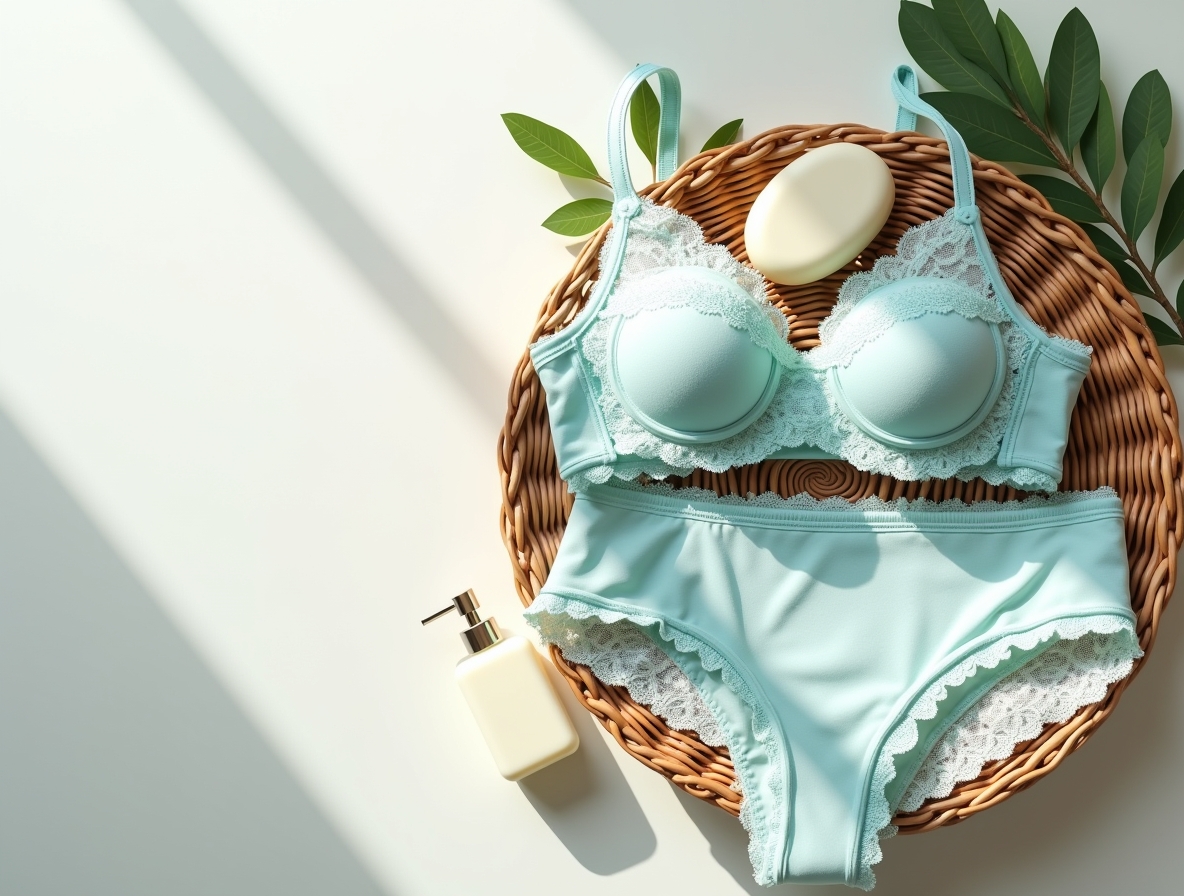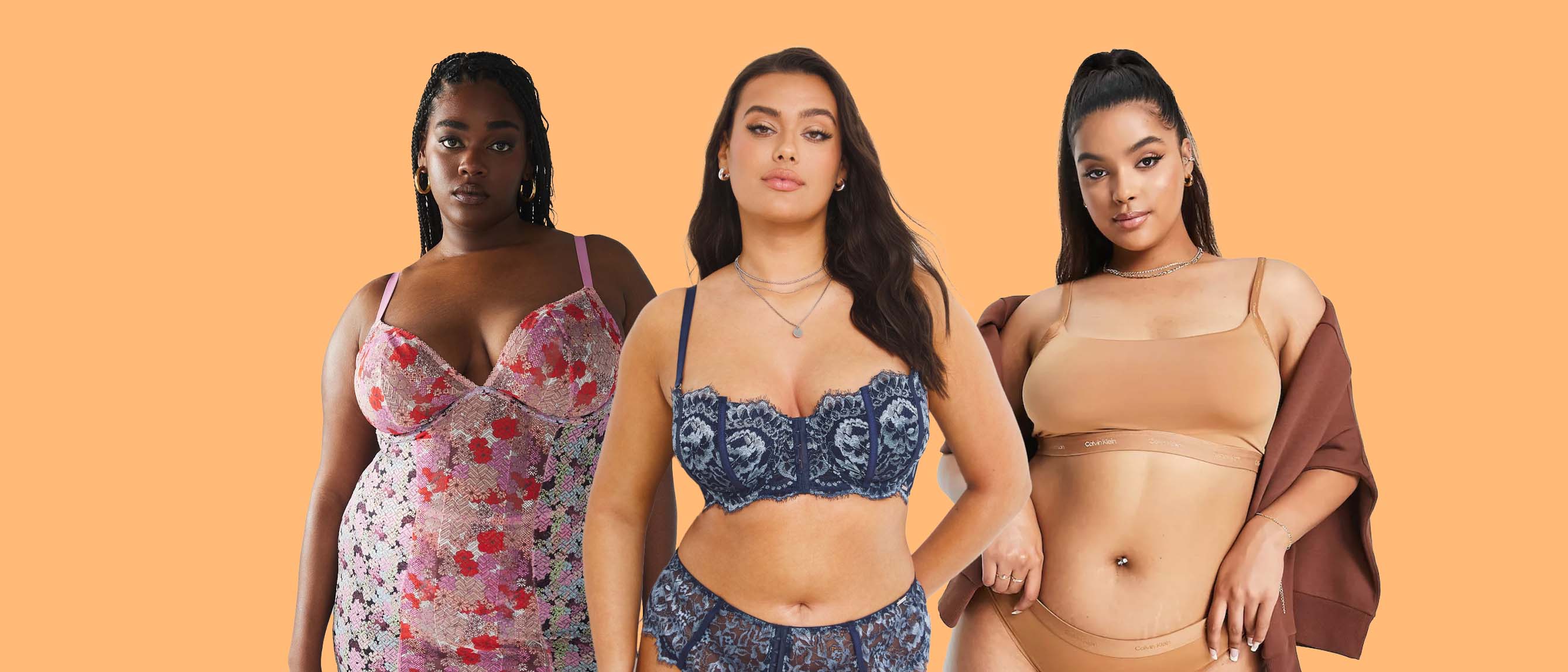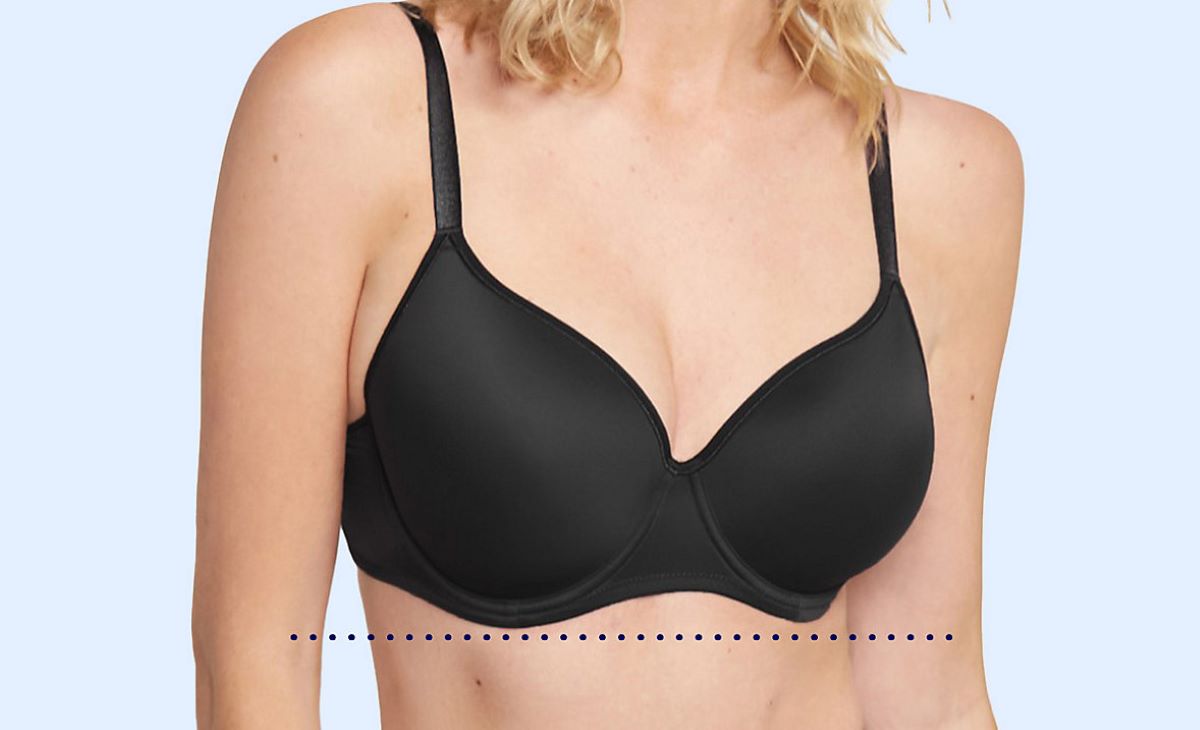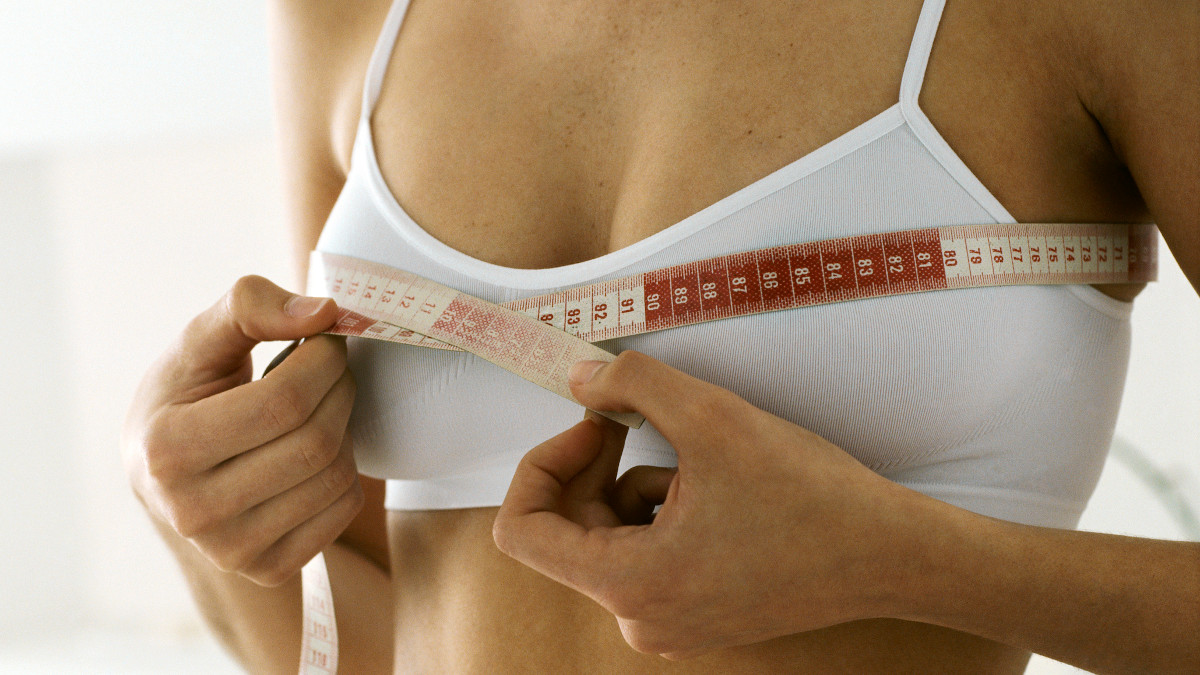Home>Women's Underwear>Bras>How Can I Measure My Bra Size At Home
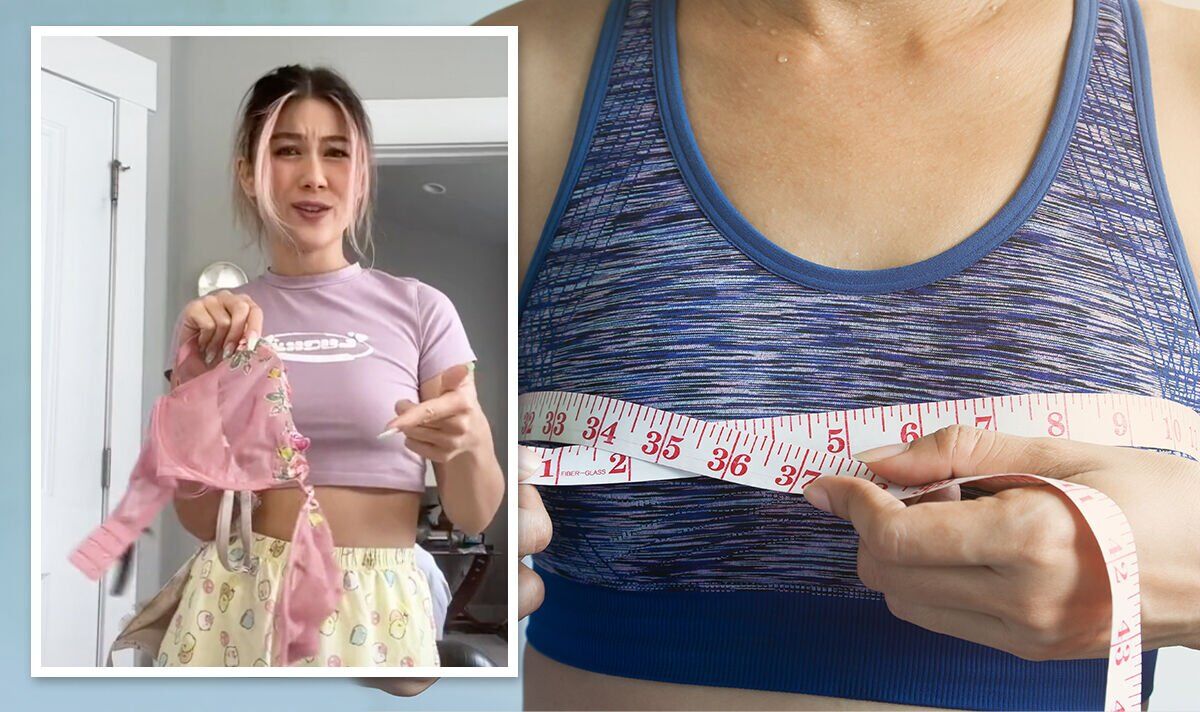

Bras
How Can I Measure My Bra Size At Home
Modified: August 2, 2023
Find out how to measure your bra size at home with our easy step-by-step guide. Discover the perfect fit for your bras and ensure maximum comfort.
(Many of the links in this article redirect to a specific reviewed product. Your purchase of these products through affiliate links helps to generate commission for Under-tec.com, at no extra cost. Learn more)
Table of Contents
Introduction
Understanding your bra size is a vital step in finding the perfect bra that offers comfort, support, and enhances your natural shape. However, many women struggle to determine their correct bra size and end up wearing ill-fitting bras that can lead to discomfort and compromised style. Luckily, measuring your bra size at home is easier than you might think.
Knowing your exact measurements can save you time and money, as it enables you to confidently shop for bras and ensure a proper fit. Whether you’re shopping online or in-store, having accurate measurements will make the process much smoother and increase your chances of finding a bra that suits your body shape and style preferences.
It’s important to keep in mind that our bodies change over time, so regularly reassessing our bra size is crucial for maintaining optimal comfort and support. Whether due to weight fluctuations, pregnancy, or the natural aging process, our breasts may undergo changes that necessitate a new bra size. By learning how to measure your bra size at home, you can stay one step ahead and ensure that you’re always wearing the right bra.
In this guide, we’ll take you through the steps of measuring your bra size at home, explaining how to calculate your band size, determine your cup size, and interpret your measurements effectively. We’ll also highlight common mistakes to avoid and offer tips for checking the fit of your bra once you’ve found your size.
By the end of this article, you’ll have the knowledge and confidence to measure your bra size accurately, empowering you to find the perfect fit and enhance your comfort and style. So, let’s dive in and get started on your journey to finding your ideal bra size!
Understanding the Importance of Correct Bra Size
Wearing the correct bra size is not just about feeling comfortable; it can also significantly impact your overall appearance and well-being. Many women underestimate the importance of wearing the right bra, unaware of the potential consequences of ill-fitting undergarments.
One of the primary benefits of wearing the correct bra size is improved comfort. A properly fitted bra provides the necessary support to your breasts, minimizing discomfort, pain, and even potential breast tissue damage. It helps distribute the weight of your breasts evenly, reducing strain on your shoulders, back, and neck. By wearing a bra that fits well, you can say goodbye to uncomfortable digging straps, poking underwires, and irritated skin.
Addititionally, wearing the right bra can enhance your natural appearance. A well-fitting bra lifts and shapes your breasts, giving you a more flattering silhouette. It can boost your confidence and make your clothes fit and look better. Whether you’re wearing a t-shirt or an elegant evening dress, the right bra can create a smooth, streamlined look, enhancing your overall style.
Moreover, wearing an incorrect bra size can contribute to long-term health problems. The lack of support can lead to sagging breasts and stretched ligaments, which are challenging to reverse. It may also affect your posture, leading to rounded shoulders and spinal misalignment. By wearing the right bra size, you can minimize the risk of developing these issues and maintain better breast health.
Understanding the importance of a correct bra size is crucial for every woman. It is not just about aesthetics but also about overall well-being. By investing the time to measure your bra size accurately and find the right fit, you can experience improved comfort, enhanced appearance, and reduce the risk of long-term health problems.
In the following sections, we will guide you on how to measure your bra size at home, helping you embark on a journey towards finding the perfect fitting bra. It is important to note that finding the right bra size is a personal journey, and it may require trying on different bras and styles to discover what suits you best. Let’s move on to the next section and learn the common mistakes to avoid when measuring your bra size.
Common Mistakes in Bra Sizing
When it comes to determining your bra size, there are several common mistakes that women often make. These mistakes can lead to wearing bras that are too tight, too loose, or simply the wrong shape for their bodies. By being aware of these common pitfalls, you can avoid them and ensure a more accurate measurement.
One of the most common mistakes is relying solely on the bra size you have worn for years without reevaluating it. Our bodies change over time, and factors such as weight fluctuation, pregnancy, and aging can affect our breast size and shape. Therefore, it’s important to measure your bra size regularly, especially if you haven’t done so in a while.
Another mistake is measuring over a padded or push-up bra. This can result in an inaccurate measurement, as the padding can alter the shape and size of your breasts. For the most accurate results, measure your bra size without any additional padding or enhancers.
Improper placement of the measuring tape is another common error. Many women make the mistake of measuring too loosely or too tightly around their bust. To get an accurate measurement, ensure that the tape is held firmly against your body, without pulling it too snugly or leaving any gaps.
Additionally, overlooking the importance of the band size is a common mistake. The band provides the majority of the support in a bra, so it’s essential to get the right fit. Some women mistakenly believe that a smaller band size will offer more support, but in reality, a band that is too tight can be uncomfortable and restrict breathing. Conversely, a band that is too loose will not provide adequate support.
Lastly, many women struggle with determining their cup size. The key to getting an accurate cup size is to ensure that the measuring tape is held horizontally around the fullest part of your breasts, and that it is not too tight or too loose. Avoid compressing your breasts or letting the tape sag, as this can lead to incorrect measurements.
By being aware of these common mistakes and taking the time to measure your bra size accurately, you can significantly improve your chances of finding a bra that is comfortable, supportive, and enhances your natural shape. In the next section, we will guide you through a step-by-step process on how to measure your bra size at home.
Step-by-Step Guide: How to Measure Your Bra Size at Home
Measuring your bra size at home is a simple and effective way to ensure you find the perfect fitting bra. With just a few basic tools and a little patience, you can accurately determine your band size and cup size. Here’s a step-by-step guide to help you measure your bra size at home:
1. Start with a soft measuring tape. Ideally, use a cloth or flexible tape measure. Avoid using a metal tape measure, as it may not provide accurate results.
2. Measure your band size. Start by standing upright and wrapping the measuring tape around your ribcage, just below your bust. Ensure the tape is parallel to the ground and snug against your skin. Make a note of the measurement in inches.
3. Calculate your band size. If the measurement is an even number, add 4 inches. If it’s an odd number, add 5 inches. For example, if your band measurement is 29 inches, adding 4 inches gives you a band size of 33. If your band measurement is 30 inches, adding 5 inches gives you a band size of 35.
4. Determine your cup size. Measure around the fullest part of your bust, making sure the tape is parallel to the ground and not too tight or too loose. Subtract your band size measurement from this bust measurement to find your cup size. Refer to a bra size chart to determine the corresponding cup size. For example, if your band size is 33 inches and your bust measurement is 37 inches, the difference is 4 inches, which typically corresponds to a D cup.
5. Double-check your measurements. To ensure accuracy, take a second set of measurements, following the same process. If the results differ, take an average of the two measurements.
6. Try on different sizes. Keep in mind that bra sizing can vary between brands and styles. If possible, try on a few different sizes and styles to find the best fit for you. Pay attention to how the band feels around your ribcage and how the cups accommodate your breasts.
Remember, finding the perfect fitting bra is a personal journey, and it may take some trial and error to find the right size and style that suits you best. By following these steps, you will have a good starting point for determining your bra size at home. In the next section, we will delve into interpreting your measurements and understanding the different cup sizes.
Calculating the Band Size
Calculating your band size is an essential step in determining your bra size. The band size provides the foundation for support and comfort, so it is crucial to get an accurate measurement. Here is how you can calculate your band size:
1. Measure your underbust. Use a soft measuring tape and wrap it around your ribcage, just below your bust. Ensure the tape is parallel to the ground and snug against your skin, but not too tight. Take note of the measurement in inches.
2. Round to the nearest even number. If your underbust measurement is an odd number, round it up to the nearest even number. For example, if your measurement is 31 inches, round it up to 32 inches.
3. Add the appropriate amount. Depending on your rounded underbust measurement, add either 4 or 5 inches to determine your band size. If your rounded measurement is even, add 4 inches. If it is odd, add 5 inches. For example, if your rounded measurement is 32 inches, adding 4 inches would result in a band size of 36.
4. Check the fit. Once you have calculated your band size, it’s important to try on bras in that size to ensure they feel comfortable and provide the desired level of support. The band should fit snugly around your ribcage without feeling too tight or causing any discomfort. You should be able to fit two fingers comfortably between the band and your skin.
Keep in mind that every individual’s body shape and personal preference may vary. Some women may prefer a slightly tighter or looser band for different activities or outfit styles. It’s essential to find the band size that feels most comfortable and supportive for you.
Calculating the band size is just the first step in measuring your bra size. In the next section, we will discuss how to determine the cup size, which is equally important in finding the right fit for your breasts.
Determining the Cup Size
Determining the cup size is a crucial part of finding the perfect-fitting bra. It determines the volume of your breasts and helps achieve the desired shape and support. Here’s how you can determine your cup size:
1. Measure around the fullest part of your bust. Use a soft measuring tape and wrap it around the fullest part of your breasts, making sure the tape is parallel to the ground. Avoid pulling the tape too tightly or letting it sag. Note down the measurement in inches.
2. Calculate the difference. Subtract your underbust measurement (band size) from your bust measurement. The difference will give you an approximate cup size. For example, if your band size is 36 inches and your bust size is 40 inches, the difference is 4 inches.
3. Refer to a bra size chart. Consult a bra size chart to determine your cup size based on the difference you calculated. Different brands may have slightly different sizing conventions, so it’s essential to use a chart specific to the brand you are considering. As a general guide, each inch of difference corresponds to a cup size. For example, a 1-inch difference typically corresponds to an A cup, a 2-inch difference to a B cup, and so on.
4. Try on different cup sizes. Once you have a rough idea of your cup size, it’s important to try on bras in that size to ensure a proper fit. Keep in mind that cup sizes can vary slightly between brands and styles. Pay attention to how the cups accommodate your breasts, ensuring there is no spillage or gaping. The cups should provide a secure and comfortable fit, with no excess fabric or tightness.
It’s important to remember that determining the cup size is not an exact science. It serves as a general guideline to start your bra shopping journey. Personal preference, breast shape, and individual differences can influence how bras fit and feel. Adjustments may be needed to find the perfect cup size that suits your unique body and preferences.
In the next section, we will discuss how to interpret your measurements and find the best-fitting bra based on your calculated band and cup size.
Interpreting Your Measurements
Now that you have measured your band size and determined your cup size, it’s time to interpret your measurements and find the best-fitting bra. Here’s how you can interpret and use your measurements effectively:
1. Combine your band and cup size. Use your calculated band and cup sizes together to form your complete bra size. For example, if your band size is 36 and your cup size is B, your bra size would be 36B.
2. Consider sister sizes. Bra sizes are not one-size-fits-all, and there may be variations in fit across different brands and styles. If you find that the band feels too tight or too loose, you can try sister sizes. Sister sizes are bra sizes with a different band size and cup size combination that provide a similar fit. For example, if you find the band size 36 too tight, you can try a sister size of 38A or 34C to maintain a similar cup volume while adjusting the band fit.
3. Take into account personal preferences and breast shape. Your measurements provide a starting point, but personal preferences and breast shape also play a role in finding the right bra. Some women may prefer a more relaxed or snug fit in the band, and breast shape can affect how certain styles fit. Trying on bras in different styles, such as plunge, balconette, or full cup, can help you determine which ones flatter your shape and offer the desired level of support and comfort.
4. Seek professional fitting if needed. While measuring your bra size at home can be helpful, it’s worth noting that professional bra fittings can provide additional expertise. If you’re uncertain about your measurements or want personalized recommendations, consider visiting a lingerie store or consulting with a bra fitting specialist who can guide you in finding the perfect fit.
Remember, finding the right bra size is a process of trial and error. It may take some experimentation and trying on different styles before finding the bras that best suit your needs. Don’t be discouraged if the first few bras you try aren’t the perfect fit. Keep an open mind, be patient, and trust your instincts when assessing the fit and comfort of each bra you try on.
In the next section, we will discuss how to check the fit of your bra once you have determined your size.
Checking the Fit of Your Bra
After determining your bra size and finding bras in that size, it’s important to check the fit to ensure optimal comfort and support. Here are some key points to consider when checking the fit of your bra:
1. Band fit: The band should fit snugly around your ribcage, parallel to the ground. It should feel comfortably snug, providing support without digging into your skin. You should be able to fit two fingers comfortably under the band.
2. Cup fit: The cups should fully enclose and support your breasts, with no bulging or overflow. There should be no gaps or wrinkling in the cups, indicating a poor fit. Make sure the underwire, if present, sits flat against your ribcage and follows the natural curve of your breasts.
3. Center gore: The center gore, the piece of fabric between the cups, should lie flat against your sternum. It should not be lifted away or dig into your breast tissue. A properly fitting bra will have a center gore that sits flush against your chest.
4. Strap fit: The bra straps should provide support without digging into your shoulders. They should stay in place without slipping off or leaving marks. Adjust the straps to a length that feels comfortable and allows you to move your arms freely.
5. Overall comfort: Pay attention to how the bra feels overall. It should be comfortable to wear throughout the day, allowing you to move and breathe effortlessly. If any part of the bra feels uncomfortable or restrictive, it may be an indication of a poor fit.
Remember, everyone’s body shape and personal preferences are unique. What works for one person may not work for another. It’s important to trust your instincts and listen to your body when assessing the fit of your bra. If something doesn’t feel right, it’s worth trying on different sizes, styles, or brands to find the perfect fit for you.
Regularly check the fit of your bras, especially as your body changes over time. Weight fluctuations, pregnancy, or aging can impact your size and shape, so it’s important to reassess your bra size regularly to ensure continued comfort and support.
In the next section, we will discuss when it’s necessary to reevaluate your bra size and make adjustments.
When to Re-evaluate Your Bra Size
Our bodies are constantly changing, and so too can our bra size. It’s important to regularly re-evaluate your bra size to ensure that you’re wearing the correct size and getting the maximum comfort, support, and style. Here are some key instances when it’s necessary to re-evaluate your bra size:
1. Weight fluctuations: If you experience significant weight loss or gain, it can affect the size and shape of your breasts. As a result, your bra size may no longer be the best fit for you. It’s important to measure and reassess your bra size after any significant weight changes to ensure optimal comfort and support.
2. Pregnancy and breastfeeding: During pregnancy and breastfeeding, breasts can undergo significant changes in size and shape. It’s common for women to experience increased breast size during pregnancy and fluctuations throughout the breastfeeding journey. It’s recommended to measure and adjust your bra size throughout the different stages to accommodate these changes and provide the necessary support.
3. Hormonal changes: Hormonal fluctuations can also impact breast size. This can occur during menstrual cycles, menopause, or as a result of hormonal medications. If you notice changes in breast size or feel that your current bras are no longer fitting comfortably, it may be time to re-evaluate your bra size.
4. Aging and gravity: With age, breasts may naturally lose volume and elasticity, leading to changes in size and shape. Gravity also plays a role in breast sagging over time. It’s essential to reassess your bra size periodically to ensure that you’re wearing bras that provide the necessary support and shape as your body changes.
5. Signs of discomfort: If you experience any signs of discomfort, such as strap digging, underwire poking, or red marks on your skin after wearing a bra, it’s an indication that your bra size may not be ideal. Re-evaluating your size and trying on different bras can help address these discomfort issues and improve your overall bra-wearing experience.
By keeping an eye out for these situations and regularly re-evaluating your bra size, you can ensure that you’re wearing the right bra for your current body shape and needs. Remember, a well-fitting bra is not only about comfort but also about boosting your confidence and enhancing your overall appearance.
In the next section, we will conclude our discussion and summarize the key points of measuring your bra size at home.
Conclusion
Measuring your bra size at home is a practical and empowering way to ensure that you find bras that provide optimal comfort, support, and style. By following a step-by-step guide and understanding common mistakes to avoid, you can accurately determine your band size and cup size.
Remember to interpret your measurements and consider personal preferences and breast shape when selecting bras. Always check the fit of your bras, ensuring the band, cups, center gore, and straps align with your body correctly. Making adjustments or trying sister sizes can help achieve the perfect fit.
It’s important to re-evaluate your bra size regularly, especially during times of weight fluctuation, pregnancy, hormonal changes, and with age. Our bodies change, and our bra size may change accordingly. By staying aware of these changes, you can continue to find bras that offer the ultimate comfort and support.
Ultimately, finding the right bra size is a personal journey. Don’t be discouraged if it takes some time and experimentation to find your perfect fit. Trust your instincts and listen to your body’s signals as you navigate through different sizes, styles, and brands.
With the knowledge and understanding gained from measuring your bra size at home, you can confidently embark on the quest for bras that enhance your natural shape, boost your confidence, and make you feel comfortable every day.
So, go ahead and put your newfound knowledge into practice. Measure your bra size at home, explore different styles and brands, and embrace the comfort and support of a perfectly fitting bra.
